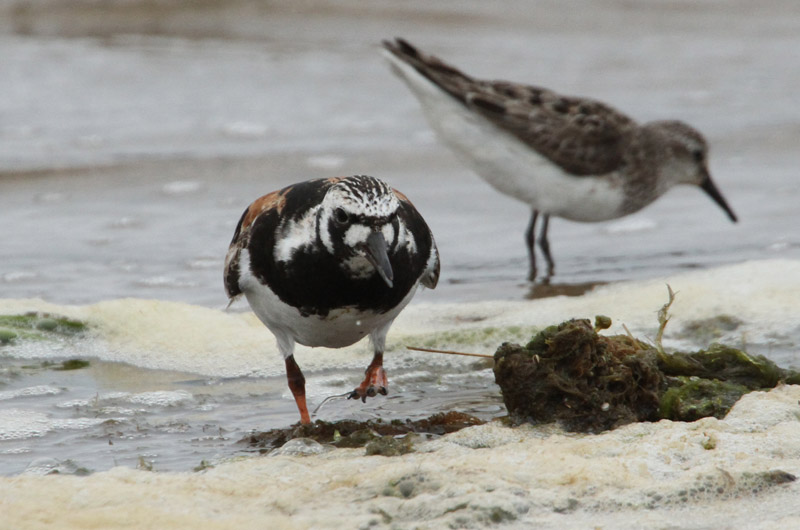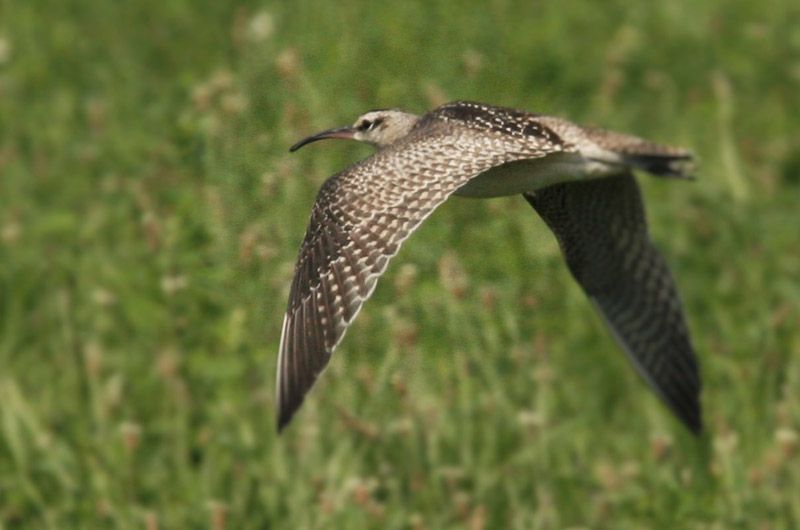Piping plovers have been protected along the Atlantic Coast since 1986, and over the years many people have asked about their wintering grounds. Some naysayers have claimed that the birds we protect are then slaughtered and eaten in South America.
While we knew that “our” plovers did not get to South America, we did not know where they spent their winters. In 2012 their wintering grounds were finally discovered: a group of islands known as the Joulter Cays, lots of small sandbars and tidal flats covering almost 1,000 square miles a little north of Andros Island in the Bahamas. An estimated one third of all the plovers nesting on the Atlantic Coast spend their winters here.
Once the site was discovered, the U.S. Fish and Wildlife Service and numerous non-profit organizations started working with the Bahamian government and non-profits there to preserve the Joulter Cays. It turns out that this area is also one of the world’s best sites for saltwater fly-fishing for bonefish, a $141 million per year enterprise. The organizations are working together to protect both species.
In 2015, these U.S. and Bahamian organizations started color-banding the piping plovers that winter on the Joulter Cays. The bands are a pink flag containing a two-character code on one upper leg and a standard silvery metal USGS band on the other upper leg. The furthest north one of these banded birds has been spotted is on the Acadian Peninsula of New Brunswick, Canada. On June 28, one of these plovers was observed here, on East Beach, Chappaquiddick. So we may get more sightings.
The southward migration of the piping plovers has started, and the first birds have already returned to their wintering grounds. But most are still somewhere along the Atlantic Coast. If you see one of these pink-banded plovers, please write down the two-character code, which may be read using binoculars, and take a photo of the bird without disturbing it. And, of course, let us know. We will make sure the sighting is reported to the appropriate authorities if you do not wish to do so yourself.
Bird Sightings
Grackles have been seen by multiple observers. Charlie Kernick and Allouise Morgan both have commented on the appearance of juvenile grackles in their yards, still being fed by their doting parents. They, along with red-winged blackbirds, brown-headed cowbirds and starlings have all started to gather into flocks. Watching them flying around in unison can be fascinating. The overall shape and tail length of these various black birds can help identify them.
I have not received many reports of black-billed cuckoos this year. They tend to be fairly nomadic from year to year as they breed near outbreaks of their caterpillar food. Jim Suozzo reports that a black-billed cuckoo flew in front of his car when he was near the Aquinnah Town Hall on July 23.
Sue Hruby had two fledgling Cooper’s hawks visit her bird bath on July 23. I bet that there was very little bird activity in her yard while they were there.
Large shorebirds, almost the size of an American crow, with a long down-curved bill, are quite distinctive. The one we are most likely to see, especially early in the southward migration, is the whimbrel. Ken Magnuson observed four of them flying west over Norton Point on July 23. Look for them on tidal flats and also on upland pastures.
Many smaller shorebirds are also around. My July 23 guided birding tour went to Little Beach in Edgartown, where we found semipalmated plovers, piping plovers, ruddy turnstones, greater yellowlegs, short-billed dowitchers, semipalmated sandpipers, least sandpipers, willets and American oystercatchers.
Davis Padulo spotted a flock of cedar waxwings on July 24 from the little known walking path at Muskoday Farm in Katama. He also found a green heron perched in a tree at Felix Neck on July 25.
We find juvenile little blue herons around the Vineyard starting at this time of the year, but we are well to the north and east of where they nest. Their arrival is more of post-breeding dispersal where they spread out in all directions rather than a true southward migration. And we tend to get many more juveniles, which are all white and have a light bill with a dark tip, than adults, which are a dark slate blue. Steve Allen observed the first juvenile little blue heron of the season on the morning of July 25.
Southward migrating shorebirds have arrived as the nesting season winds down. Go out looking for birds and please be sure to report your sightings to birds@mvgazette.com.
Robert Culbert leads Saturday morning guided birding tours and is an ecological consultant living in Vineyard Haven.







Comments (1)
Comments
Comment policy »